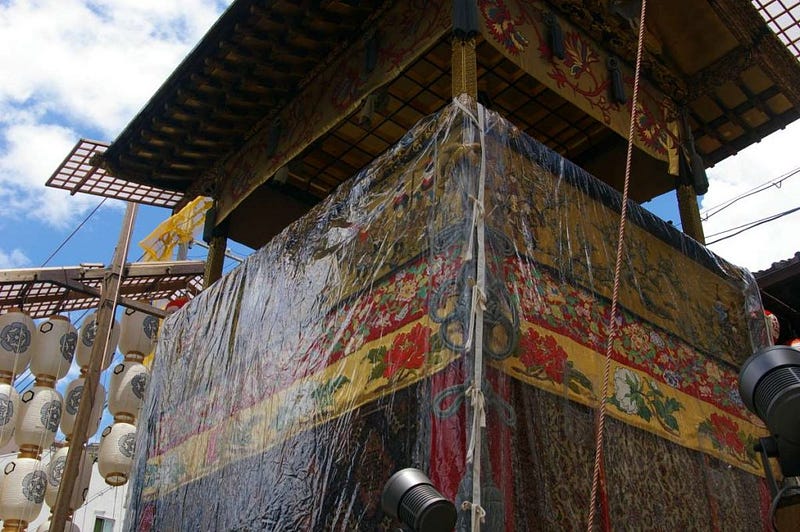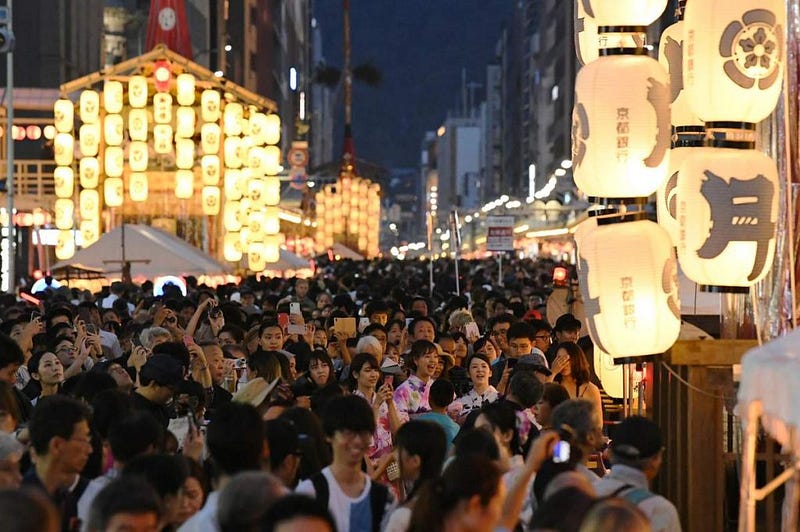The Gion Matsuri is a 1,150-year-old phenomenon. There is nothing quite like it anywhere else. Today’s festival is a multilayered and intricate collection of religious rites and cultural traditions, with the sacred and the secular, the pure and the profane all taking a bow.
As Catherine Pawasarat aptly puts it in her excellent book The Gion Festival: Exploring Its Mysteries (2020), the Gion Festival is “one of the oldest and most complex urban festivals in the world.”
Although as noted earlier in this series, the Gion Matsuri is at heart a plea for protection from disease from a once feared god, it is also a joyful celebration of the moment and affirmation of community identity and civic pride. The essence of the festival has been preserved from its earliest days when it began as a goryo-e held in the Shinsen-en imperial garden. Yet, over time, it evolved from an event orchestrated by the aristocracy to a primarily merchant-townsmen affair.
I should note that the secular half of the festival (to distinguish it from the rituals associated directly with Yasaka Shrine) is subdivided into the Saki Matsuri (“Earlier Festival”), July 10–17, and the Ato Matsuri (“Later Festival), July 18–24.

The Processions
The largest procession of floats takes place on July 17, when the community greets the mikoshi carrying the kami for a one-week stay at the otabisho, which is located the south side of Kyoto’s Shijo Dori between Teramachi Dori and Kawaramachi Dori. A smaller version follows on July 24 as a send-off when the gods return to the shrine.
In 2009 UNESCO listed these yamaboko (also called yamahoko) float processions as an Intangible Cultural Heritage of Humanity event. For nearly five decades, starting in 1966, the Saki Matsuri and Ato Matsuri parades of floats were consolidated due to traffic concerns, but were restored to their original separate form in 2014. The parades were back in 2022 after being canceled for two years due to COVID-19, and the Saki Matsuri was broadcast live on television by NHK.
Since Yasaka Shrine was in fact located outside the center of the city in premodern times, the two parades of floats do not go there. Instead, the kami come to visit the people.
During the Shinkosai procession on the evening of July 17, the three mikoshi carrying the principal kami of Yasaka Shrine travel to the otabisho, where they remain on display for one week, before heading back to the shrine in the Kankosai procession.
The purpose of the enormously popular Yamaboko Junko parade of floats on the morning of July 17th is more than anything else purification of the neighborhood before the arrival of the kami. It also is meant to greet and entertain the gods. But since the parade takes place before they even arrive, obviously they are not there to view it while it is going on.

Source URL: https://japan-forward.com/the-gion-matsuri-a-unique-midsummer-street-celebration/
Comments
Post a Comment